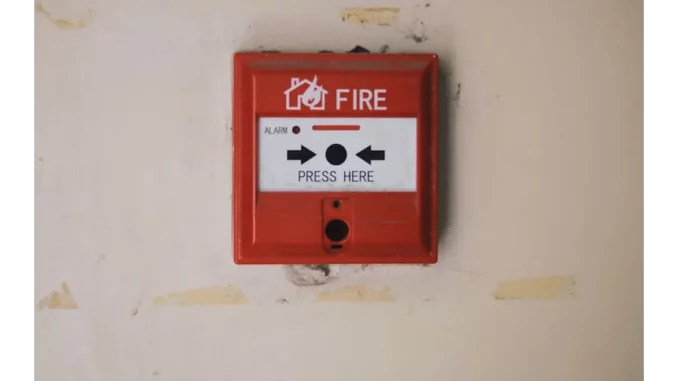
As John Williams, I had the pleasure of sitting down with a seasoned professional in the field of building safety regulations, Mr. Peter Thompson, who has been working in the industry for over two decades. Peter, an expert in building control and safety, currently serves as an advisor to several construction firms and regulatory bodies in the UK. Our discussion centred around the latest publications and updates in building control and safety regulations in the UK, which have significant implications for the construction industry.
Focus360 Energy: property compliance services – pre-planning to post-construction. Learn more.
Peter began by highlighting the forthcoming Grenfell Inquiry Final Report, expected on 4 September 2024. “The anticipation surrounding the Grenfell Inquiry’s final report is palpable,” he remarked. “It’s not just about looking back at the tragedy but ensuring that such an event never happens again.” He noted that the fire incident in Dagenham over the recent bank holiday weekend served as a grim reminder of the urgency needed in implementing the Building Safety Act 2022 (BSA 2022).
“The Building Safety Act 2022 is a landmark piece of legislation,” Peter explained. “It aims to overhaul the safety measures across the construction industry, especially focusing on high-rise buildings. The Deputy Prime Minister, Angela Rayner, has been vocal about speeding up the remediation of unsafe buildings. This is not just a regulatory challenge, but a moral imperative.”
One significant change Peter mentioned is the appointment of Rushanara Ali MP as the Building Safety Minister. “Her role is crucial,” Peter said. “She’s responsible for overseeing the Grenfell Community, the inquiry, building safety regulations, and remediation efforts. Having a dedicated minister for these areas underscores the government’s commitment to building safety.”
Moving on to the technical side, Peter discussed the updated Common Assessment Standard (CAS) published by Build UK. “The CAS is a vital tool,” he explained. “Version 4, which came out on 1 July 2024, includes new sections on building safety. This ensures that companies can demonstrate their competence in fulfilling their roles under the BSA 2022. It’s a step towards higher accountability and quality standards in the construction process.”
However, Peter was quick to point out the challenges faced in building control applications. “The Building Safety Regulator (BSR) has been experiencing delays due to a surge in applications, many of which are incomplete or unclear,” he noted. “The BSR has made it clear that applicants need to submit detailed and comprehensive documentation. This is especially critical for higher-risk buildings (HRBs).”
Peter also shared his thoughts on the new resources available to aid in the preparation of building control applications. “The BSR has released several webinars and a comprehensive Q&A to help applicants understand the requirements better,” he said. “These resources are invaluable for ensuring that applications meet the necessary standards from the get-go.”
Another critical update Peter touched upon was the government’s guidance on section 30A non-determination applications for HRBs. “This guidance is crucial for applicants who don’t receive a decision from the regulator within the stipulated timeframe,” he explained. “It provides a clear process for applying to the Secretary of State, which ensures that projects are not indefinitely delayed.”
Peter also highlighted the new regulations for varying work on HRBs covered by the transitional regime. “These regulations, effective from 6 August 2024, provide much-needed clarity,” he said. “They ensure that amendment notices can be made without the risk of the HRB falling outside the transitional regime, which is a significant relief for many in the industry.”
Discussing the recent publications on building control practice guidance, Peter emphasised their importance. “The guidance published on 22 August 2024 addresses various scenarios, including cancellations, transfers, and reversions,” he noted. “This is particularly useful for local authorities and registered building control approvers (RBCAs) in managing projects efficiently.”
Peter also mentioned the new duties for insolvency practitioners under the BSA 2022. “Insolvency practitioners now have to notify relevant authorities within 14 days of their appointment,” he explained. “This ensures that all stakeholders are aware of any changes in the responsible persons for an HRB, which is crucial for maintaining safety standards.”
The discussion also covered the guidance on Building Liability Orders (BLOs) introduced under the BSA. “The recent judgment in Wilmott Dixon v. Prater provides clear guidance on the application of BLOs,” Peter said. “This prevents companies from using shell entities to avoid liability for cladding defects, holding all associated parties accountable.”
Finally, Peter touched upon the changes in standard form contracts to reflect the new building control regime. “The JCT 2024 contracts and the RIBA Building Regulations Principal Designer Professional Services Contract (2024) have been updated to align with the BSA 2022,” he noted. “These changes ensure that all contractual agreements are compliant with the latest safety regulations.”
As our conversation concluded, it was evident that the recent publications and updates in building control and safety regulations are setting a new standard for the construction industry in the UK. “The focus is clearly on enhancing safety, accountability, and transparency,” Peter summed up. “It’s a challenging yet necessary journey to ensure that our buildings are safe for everyone.”
By John Williams


Be the first to comment